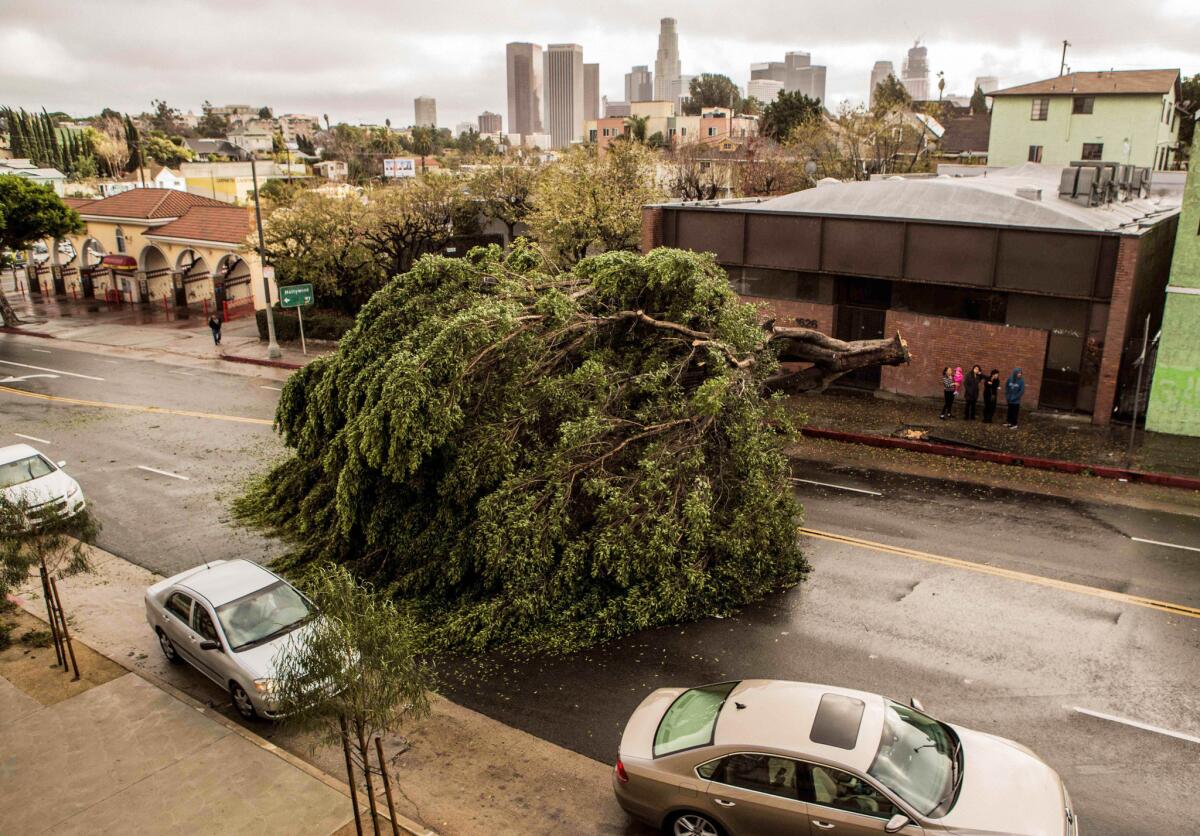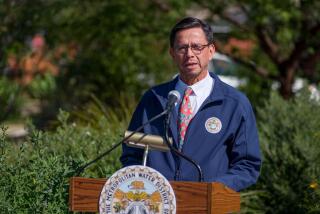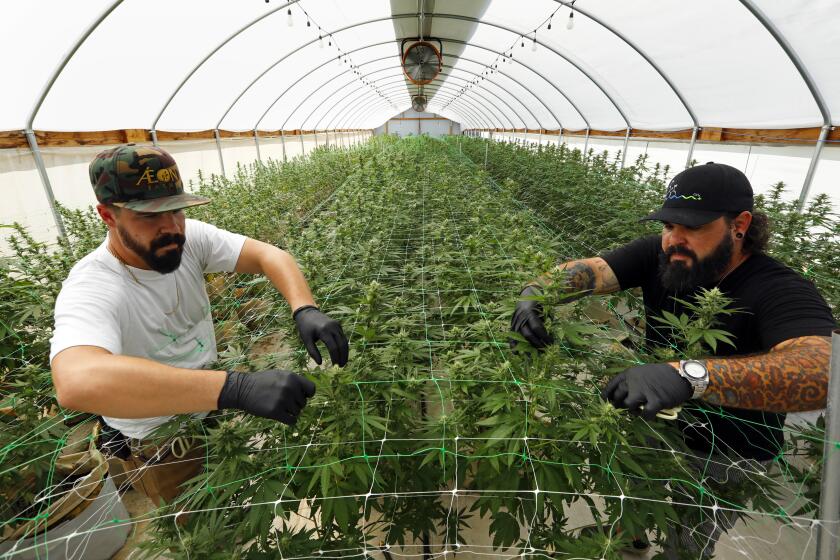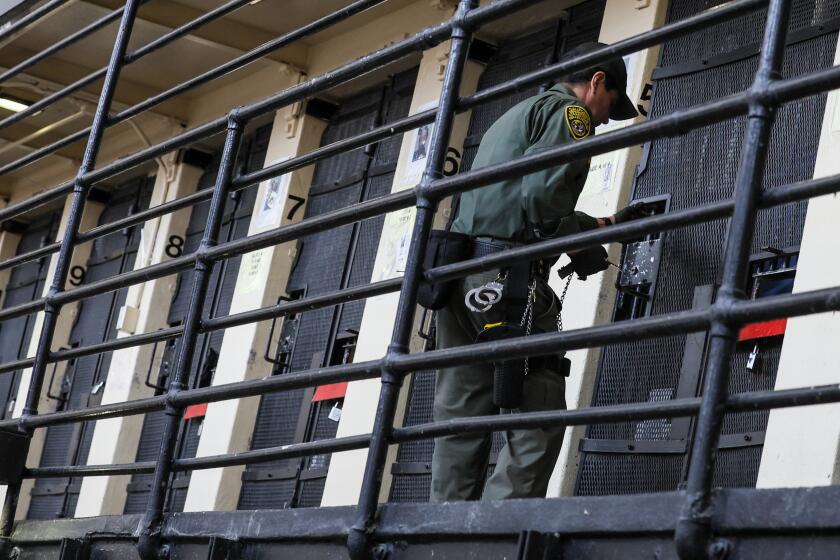Editorial: Protecting L.A.’s trees

A large tree that was toppled by strong winds sits on its side on Temple Street on Jan. 31.
When developers with a permit from the city of Los Angeles to cut down 56 specific trees on a large parcel of land in Brentwood went further and cut down three more trees without authorization, they triggered outrage from neighbors, calls for their construction permits to be revoked and an investigation by the city’s Bureau of Street Services.
In a sprawling city with a paucity of urban parks, trees are fiercely protected. In Silver Lake, a billboard company came under fire for trimming and damaging trees that blocked the view of its signs. There was an uproar when local officials allowed the removal of 400 trees in the area south of the 10 Freeway because they would encumber the passage of the hulking space shuttle Endeavor as it was towed through streets to the California Science Center. For years, government agencies have encouraged homeowners in Los Angeles to plant trees, and in the early years of his administration, former Mayor Antonio Villaraigosa vowed to plant a million trees in the city; residents who wanted them were given as many as seven trees for free. When he left office, more than 400,000 had been planted.
It takes decades for trees to mature so that they can add to the much sought-after tree canopy that offers shade and solace to residents of this arid metropolis, which is drenched with sun but not much rain. That’s why it’s important — and heartening — to see Los Angeles take seriously its protection of native trees and not let developers cavalierly bulldoze them away when it suits their purposes. Consider what happened on the lush 12-acre expanse of land in Brentwood. Patrick Mitchell, a lawyer for the developers, Sullivan Equity Partners, says that his client, who is building two 15,000-square-foot mansions on the parcel, intended to follow the approved tree removal plan — which involved cutting down 56 designated trees out of 117 protected trees on the property. But the tree demolition crew mistakenly cut down three trees not included in the plan, according to Mitchell — and, he added, left standing four other trees that they were allowed to take down. Mitchell argues that all these trees are protected native trees and that if the developers had simply requested permission to cut down the ones that were mistakenly cut down, they would have been allowed to do so.
But city officials disagree. In their review of the permit violation, they found that not all these trees are equal in stature. One of the mistakenly cut trees was a 70-year-old sycamore — one of only two on the property and if not the most significant tree on the property, certainly one of the largest, according to the letter of determination from Nazario Sauceda, director of the city’s Bureau of Street Services. Sauceda also concluded that the three trees were not removed by accident but “intentionally to provide better access to the property or in some other fashion enable easier development.” He ordered the Department of Building and Safety to revoke the developer’s existing building permits and withhold any future permits for five years.
That’s a tough penalty for the developers, who had already sunk about $12 million into development and permits, and paid a habitat mitigation fee of $560,000 to the Mountains Restoration Trust. Mitchell said the penalty far outweighed the infraction and was much more severe than what other developers had gotten for wrongfully cutting down trees. “If you get a speeding ticket, you shouldn’t get the death penalty,” he said. He plans to appeal to the Board of Public Works.
It will be up to the board to decide if the punishment is too harsh. But Los Angeles is a city trying to hold on to its mature native trees. Government-mandated tree removal plans that are submitted by developers and approved by the city are not just a suggestion; they are the law. They should be followed tree-by-tree, and developers should not be allowed to come back and say, “oops, my bad” after mowing down trees outside the confines of the plan. Persuading deep-pocketed developers of this may require more than hitting them with another fee. It may mean punishing them where they suffer the most — by revoking permits and delaying the start of construction.
Follow the Opinion section on Twitter @latimesopinion and Facebook
More to Read
A cure for the common opinion
Get thought-provoking perspectives with our weekly newsletter.
You may occasionally receive promotional content from the Los Angeles Times.






